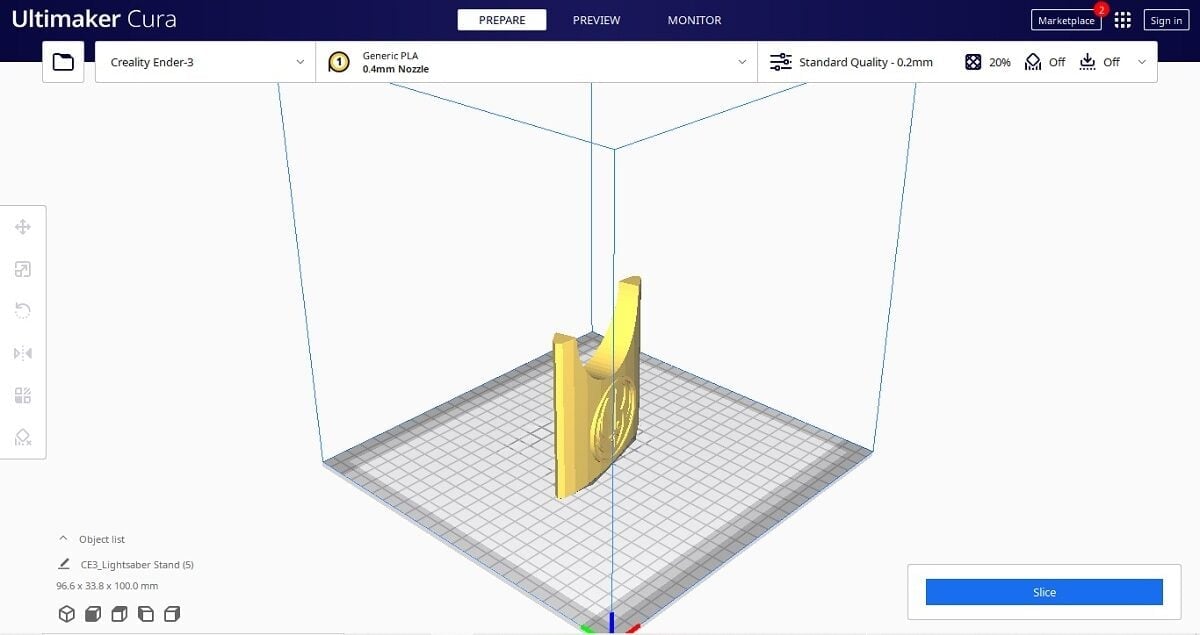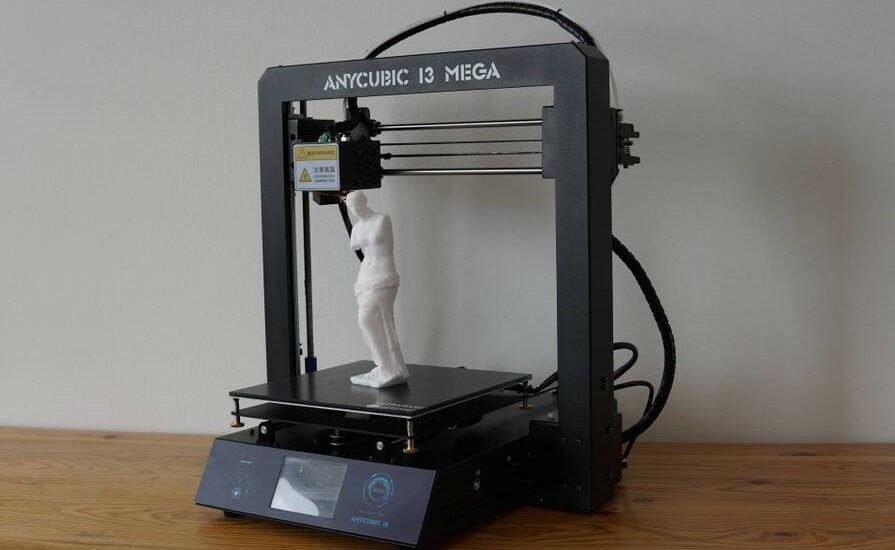If you’re familiar with 3D printing, you will surely be aware of slicer software. A slicer is a program that converts your 3D design into instructions for your printer. This is an essential part of the 3D printing process.
In the world of fused deposition modeling (FDM) 3D printing, probably the most well-known slicer is Cura. The people behind this are Dutch company UltiMaker, who started building and selling 3D printers in 2011. In 2016 they developed Cura, which has likely been used by most 3D printing enthusiasts at one time or another.
Founded in 2014, Creality is another 3D printer manufacturer, based in China. Initially, like UltiMaker, they started out by building and selling 3D printers, but they’ve since launched their own companion slicer software dubbed Creality Slicer, which actually has origins in Cura.
It’s the similarities between the two that make them both viable choices when choosing a slicer. Are they too similar to bother with a decision, or are there enough differences to help you make a clear choice? In this article, we’ll compare the two slicers and see what we can discover.
Main Features
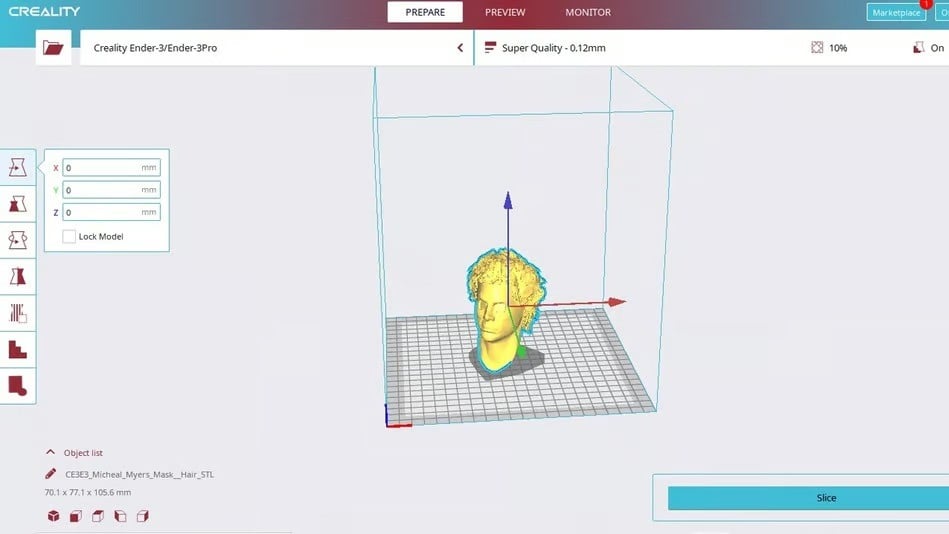
Creality Slicer owes much of its design and looks to Cura. As Cura is an open-source program, the base code of the program can be used and certain aspects can be changed to suit different needs. Such programs are known as “forks”. Creality Slicer is basically a fork of Cura, tailored specifically for Creality.
In the case of both Cura and Creality Slicer, the main features include the user interface (UI), toolbar(s), preset printer compatibility, configuration profiles, and file compatibility. Each of these features is something you will use every time you are in the program, so they should be spot on.
We’re not necessarily reviewing these features here but briefly comparing and contrasting the two slicers. So let’s start with UI.
UI
- Cura: This is clear and concise, with the target model shown in the center of the screen. While the style is simple, it’s functional and easy to get a grip on. The default setting is a white background, but you can also change it to “Dark Mode” if you prefer. Settings are also available for those with color blindness.
- Creality Slicer: This is where the two are pretty much the same. The look is almost identical and reflects Creality Slicer’s roots in Cura. There are also dark, light, and colorblindness modes, which are always useful.
Toolbars
- Cura: The toolbars are “drop-downs” along the top of the screen. However, when you add a model to the build area, you’re presented with many more user-friendly tools. These are shown to the left of the screen and allow you to manipulate the target model in terms of scale, rotation, quality, and more.
- Creality Slicer: Again, you can expect pretty much the same as it’s very similar to Cura in terms of design and function.
Profiles (Printer Configuration)
- Cura: These allow you to adjust the settings for each preset printer you add. The presets you can include are defined by the quality of print with a ranking system of Super, Dynamic, Standard, and Low. Obviously, with Cura, these settings can vary widely between different printers, so having individual profiles is essential.
- Creality Slicer: The setup here is identical, apart from the availability of printers to which you can assign a profile.
Import/Export File Compatibility
- Cura: Importing and exporting files is a similar process for both slicers. Cura allows for the import of STL files and, once sliced, will export them as G-code files. However, you can also export as 3MF and OBJ files if necessary.
- Creality Slicer: The same file types are available for export. The exception is that you can additionally export directly to Creality Cloud if you wish.
Presets (Printer Compatibility)
While the average user probably won’t use 99% of the printers listed in each slicer program, they still need to know if their printer is compatible.
Cura covers virtually every printer brand on the market, even ones no longer in production. This versatility is what makes Cura a good choice for many 3D printer users. However, there are some gaps in the models.
For instance, not all of Creality’s printers are listed, especially in the case of the Ender line. The newer additions to this range, such as the Ender 3V2, V2 Neo, or any of the “Max” options, aren’t listed. The addition of new printers to the market is great for consumers but can be a real headache for software developers.
As a Creality owner, you may think that Cura isn’t for you if it doesn’t list your particular printer. With Creality Slicer, you can rest assured that Creality has the correct presets for your printer. However, it’s worth remembering that Cura regularly updates its lists.
In the case of Creality Slicer, the list is limited to Creality’s range of FDM printers. The exception is the range of UltiMaker printers, but that’s to be expected. After all, UltiMaker created Cura! There’s a simple setting available to add a “Custom Printer”, but no other description or parameters are defined.
If you’ve opted for Creality Slicer but later choose to diversify your printing stable by adding a different brand, you’ll hit a snag with the slicer’s less comprehensive list of compatible printers. All is not lost, though. While not ideal, it’s possible to run both programs and switch between them as required.
Company & Community Support
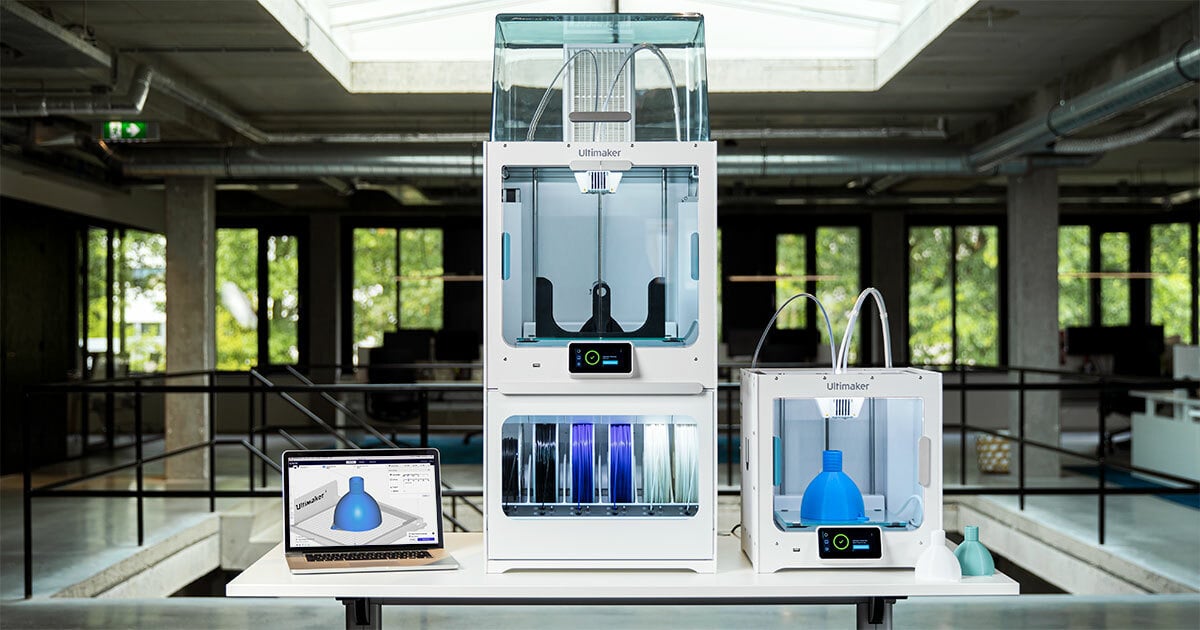
If you buy or use a product of any kind, you hope that you’ll be able to get help if a problem arises. With products like your 3D printer, you’ll likely be covered by the warranty, at least initially. With software, you’re reliant on developers releasing regular updates and other knowledgeable users.
As we’ve mentioned, Cura is well-established in the 3D printing community. It has many users who are happy to help others with their problems. If you require assistance or a tutorial, Facebook groups and forums such as Reddit can also be good resources.
While it possibly has fewer users, Creality itself has a massive customer base for its printers and hardware. Naturally, many of these customers use Creality Slicer. While there are no communities that are specific to the slicer itself, any of the Creality printer user groups have discussions around Creality Slicer. You can also check out Reddit and similar sites.
Where Creality Slicer differs from Cura here is the Creality Cloud app and website. These offer an active user community covering all aspects of Creality products and software. Users are usually happy to offer advice on any 3D printing-related questions.
Updates
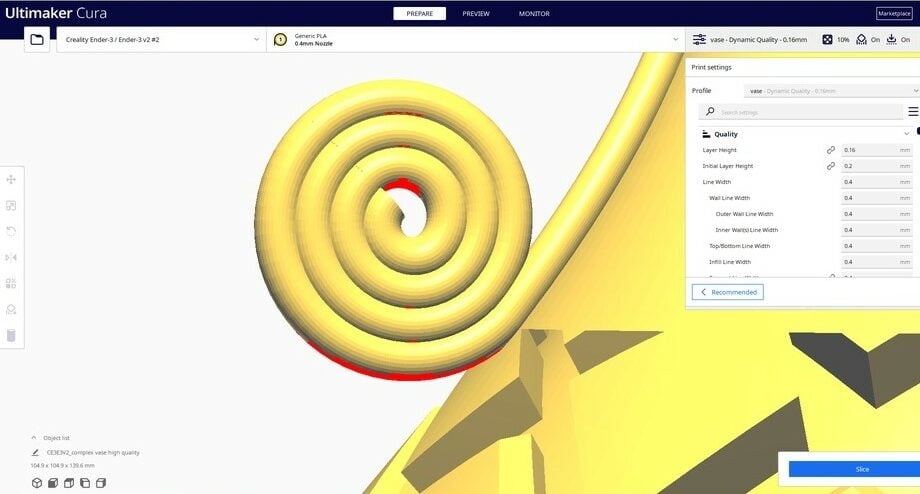
As we’ve mentioned, the only way things get “fixed” in the software world is through updates.
Cura started in 2016 with version 2.1.2; its origins are based on Slic3r software. It has, on average, released two new versions each year, with the current at time of writing being 5.2.1. With each of these releases, changes and additions were made to reflect the 3D printer market and iron out any problems. Most issues were brought up by actual users, so it shows the power of good community communication.
Creality Slicer came into being more recently in 2017. Updates also come fairly frequently, and the current version available for download is 4.8.2. As with Cura, updates are based on user feedback and the need to accommodate additions to its printer stable. Therefore, the user community is key in the development and future use of Creality Slicer.
It’s also worth noting that Creality has now produced its own Creality Print software, which mirrors many of the features of Creality Slicer in a more compact way.
Hopefully, you now have an idea about how Cura and Creality Slicer differ while still producing similar results. In essence, the choice comes down to which model of printer you own and how you want to use it to its best potential.
License: The text of "Creality Slicer vs Cura: The Differences" by All3DP is licensed under a Creative Commons Attribution 4.0 International License.

